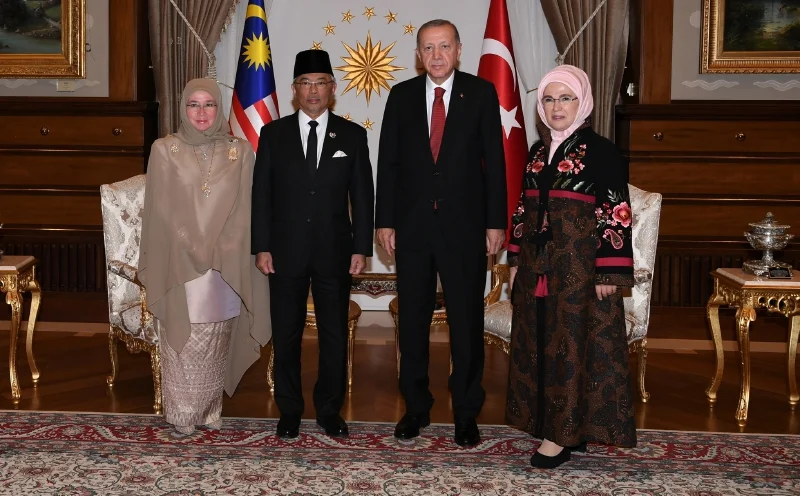Four days after intense elections, Japan’s Prime Minister Kishida Fumio joined the growing chorus of world leaders congratulating presumptive Philippine President Ferdinand “Bongbong” Marcos Jr. and expressing readiness to work with his government. The 17th Filipino head of state will inherit much improved ties marked by significant strides in the security and economic fronts made during his predecessor’s watch. He could build on this positive momentum to take relations to a higher level.
Japan is raising its profile to counter China’s growing clout in Southeast Asia and the broader Asia-Pacific. It is also hedging against the prospect of the United States’ strategic retrenchment or retreat, concerns allayed by Washington’s pronounced continued commitment to the Indo-Pacific. Tokyo also wants to have greater autonomy within the framework of the septuagenarian Japan-US alliance. As China’s rise presents challenges to its own and the region’s established security order, Tokyo will likely deepen security partnerships with regional countries like the Philippines.
In recent years, Japan has been stepping out from laying low and unravelling long self-imposed inhibitions to play a more visible and proactive role in the evolving regional security architecture. Beyond the East China Sea, Tokyo began to pay closer attention to tensions in the Taiwan Strait, disputes over the South China Sea, and Beijing’s expanding footprint in the vast Indian and Pacific Oceans. Last year, Japan’s longest-serving prime minister Shinzo Abe said that “a Taiwan emergency is a Japanese emergency, and therefore an emergency for the Japan-U.S. alliance.” When news of the China-Solomon Islands security pact broke out, Parliamentary Vice Foreign Minister Kentaro Uesugi flew to Honiara to express his country’s concern about the deal. Tokyo has also ramped up support for the maritime capacity-building programs of Southeast Asian littoral states, notably those washed by the contested South China Sea.
Japan’s growing interest in providing security goods to the region jibes with the Philippines’ armed forces modernisation and defence diversification, trends that Marcos Jr. is likely to continue. During President Rodrigo Duterte’s term, Manila inducted two new modern frigates built in South Korea, six attack aircraft from Brazil, and 16 combat utility helicopters from Poland. The country also acquired BrahMos cruise missiles from India and attacked helicopters from Turkey. The Southeast Asian nation is also raring to obtain corvettes, and offshore patrol vessels from Korea, military transport choppers from Russia, and its submarine is eyeing. Situated in this flurry of arms procurement is an order for four air surveillance radars from Mitsubishi Electric Corporation reached in 2020. The $103.5 transaction represents Japan’s first defence export deal since lifting restrictions on international arms sales in 2014.
Official development assistance has become a channel for Tokyo to help shore up Manila’s maritime arsenal. A loan from the Japan International Cooperation Agency (JICA) funded the acquisition of the largest and most modern ships in the Philippine Coast Guard’s fleet. The first of the two 97-meter multi-role response vessels built by Mitsubishi Shipbuilding, BRP Teresa Magbanua, was commissioned last May 6. The second one will arrive next month to be christened BRP Melchora Aquino. Japan also donated five decommissioned maritime patrol aircraft, enabling the Philippines to enhance its reconnaissance and surveillance reach. It also donated 40,000 units of used Huey helicopter spare parts that helped its partner recipient re-activate seven Vietnam-era Huey choppers to complete mission capable status.
The Japan Self Defense Forces is also a regular observer of annual Philippine-US military exercises. Since 2015, Manila and Tokyo have also held 20 joint naval drills. Last year, both sides conducted an air exercise. In 2018, Japanese armoured vehicles rolled out on foreign soil for the first time since World War II when they took part in the Kamandag exercises hosted by the Philippines.
A high point came last April 8-9 when the two countries held their inaugural 2+2 talks between their respective defence and foreign affairs ministers. It is only the second of its kind for the Philippines after that with the US, while it is only the second for Japan with another Southeast Asian country aside from Indonesia. All these show growing acceptance for Tokyo’s more dynamic security role in the region. Marcos would likely capitalise on this to beef up his country’s defence capacity.
Such security forays complement Japan’s robust economic portfolio. It filled the leadership void when the US withdrew from the Trans-Pacific Partnership in 2017. Its presence in the Regional Comprehensive Economic Partnership (RCEP), alongside Australia, South Korea, and New Zealand, counters China’s dominant position in its most significant free trade agreement (FTA). As FTAs are seen as possible engines to fuel post-pandemic recovery, Marcos may get Manila to ratify its RCEP membership and explore possibilities of joining CPTPP.
Japan is the only country with which the Philippines has an existing bilateral FTA dating back to 2008. This speaks volumes of Tokyo’s place in Manila’s economic calculus. The former remains a significant trade partner, aid donor, investor, and infrastructure builder for the latter. Japan will build the Philippines’ first subway rail in Metro Manila and is involved in another vital commuter railway project on Luzon’s main island. With Marcos keen to sustain Duterte’s Build, Build, Build infrastructure program, relations with Japan will highly prioritise his foreign policy.
Grounded on a strong economic anchor, Japan’s entry into the provision of security goods enhances its appeal as a strategic partner. The Philippines under Marcos will do well to expand across-the-board engagement with this time-tested partner.
[Photo credit: Reuters]


